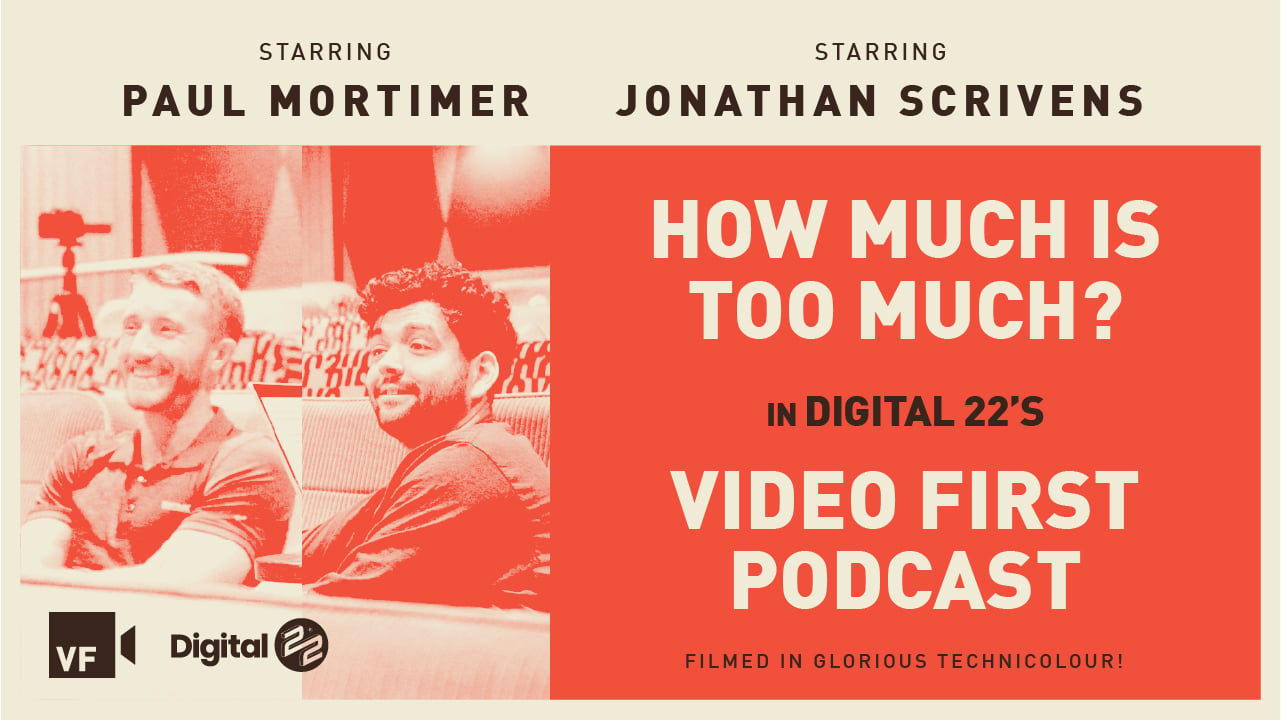The average cost of a digital marketing campaign has plagued the mind’s of business owners for...
So, you’re strapped for cash, struggling to get budget sign-off or are simply trying to save some of your firm’s funds for a rainy day. From SEO to social media, we’ve picked our favourite low-cost activities to engage in, most of which we do alongside our more expensive marketing endeavour.
Here are 21 cost-effective marketing campaigns you can create right now (most without spending a single penny). If you do need to splash some cash on any of the strategies we’ve mentioned, you’ll be sure to see a return on your marketing investment–and we’ll explain why.
Plus, if you need to penny-pinch — and since you’re here, you probably do — you can use our Conversion Calculator at the bottom of this page to get clear insights on effectiveness and expenses before you even start.
- What is cost-effective marketing?
- Cost-effective SEO
- Cost-effective social media
- Cost-effective content marketing
- Other cost-effective ideas
What is cost-effective marketing?
Cost-effective marketing doesn’t just mean ‘cheap’ marketing. Sure, some cost-effective strategies cost very little to employ (and there are plenty of free campaign ideas on this list), yet not every marketing activity needs to be free to qualify as cost-effective.
Instead, cost-effectiveness relates to how much return you can expect to receive from your investment. In short, it’s about marketing ROI. In theory, a cost-effective campaign could be borderline expensive to adopt but in turn, it could be lucrative, making you more money than was spent on it.
What’s great about these strategies is that they work for any type of business.
Small businesses usually opt for free or low-cost options, while big businesses with bigger marketing spend can start to experiment with some of the higher stakes, higher-value activities.
When working out cost-effectiveness, it’s all about the age-old cost vs time equation.
Cost-effective SEO
1. Publish details on Google My Business
Every business can create a public profile on Google that details important information such as your location, website and phone number. Setting up a Google My Business account only takes a few minutes and lets you engage with customers for free, in a place they’re likely to spend time when they’re ready to make purchasing decisions.
"Having a Google My Business allows you to show up when your brand is searched. Any updates to your business, be it opening times or news, can be displayed at a moment's notice. Plus, GMB means you're instantly visible on Google Maps too. Finally, the customer reviews displayed on your listing assures prospective customers that your business is trustworthy."
Danielle Whittaker, Senior SEO Specialist
2. Practice local SEO
As its name suggests, local SEO helps you to rank better for local search terms, usually when there’s town, city or region included in the phrase. Since 46% of all Google searches are looking for local information, this is a low-budget practice worth engaging in so you can capture your audience as they’re actively looking for a service or product nearby.

Sometimes, all it takes is a tweak of your existing web copy to show up for such keywords. In more desirable postcodes and competitive industries, you may need to shell out a small sum to bid on “busy” phrases.
3. Get basic backlinks
The following backlinks might be basic to get, but it doesn’t make them any less valuable. Before you begin paying for links (or working very hard to attract them), ask your service providers to credit you, get listed on directories and search for unlinked mentions to make your backlink profile that bit stronger.
Most importantly, these are examples of relevant links that will help you to get into Google’s good books.
4. Practice PR link building
Also known as digital PR, this type of link building is a way to get your business name (and that all-important link) all over the internet by being helpful and, essentially, making friends.
You can respond to journalist requests via platforms like Help a Report Out (HARO) and Source Bottle, giving expert quotes and receiving credit in return. Simply skim read an email in the morning and respond in the afternoon. Before you know it, you’ll have a booming backlink profile.
Cost-effective social media
5. Organic social media posts
Social media can sometimes feel like slipping into a sinkhole of endless images, GIFs and videos. Yet, with the right creativity, you can make an impact on social media — without a big budget. Creating consistent, high-quality content that utilises hashtags and account tagging to improve reach is all you need to set up a winning social media strategy.
"Putting the legwork in on your organic social presence is essential because it's the best way to nurture your customers and build a community around your product or service. Not only this, but it's also arguably one of the strongest ways to establish your brand's voice, build relationships and engage your customers at every stage of the buyer's journey."
Tom Cross, Social Specialist
6. Organic social media interaction
Second to your social posts comes social media interaction. Liking, commenting and engaging with other people’s posts mimic how we interact in real life, paying attention to other people’s efforts, as well as our own. Just like in any genuine friendship, communication is a two-way street.
While you don’t have to be obsessed with interaction —a half-hour of scrolling will do― you’ll soon become a socialite in no time and build bonds with all the right kinds of people.
7. Social media contests and giveaways
Once you have the right reach and visibility on socials, you’ll need to work on increasing engagement. That said, post engagement goes sky high during social media contests and giveaways where people can engage with your content to get a chance of winning something in return.
Sometimes, it goes so high it breaks the internet — in the case of Love Island star, Molly-Mae’s social giveaway post which was liked close to 1.2 million times. While the cost of social competition creation is small, the impact is always big.
8. Work with nano influencers
Speaking of Molly-Mae, major influencers are known for their lucrative paid partnerships and the promotional work they do with brands on social media.
However, a cheaper alternative to this successful social proof campaign is to work with nano influencers. These influencers — with much smaller follower numbers — have promotional prices which reflect their smaller reach, yet nano influencers are still incredibly effective for spreading the word about your brand and encouraging social sales, even being named the most popular influencer tier over the past year.
9. Create a private social group
For something to be exclusive, it doesn’t mean it has to be expensive. Anyone using platforms like Facebook and LinkedIn can create a private group as a place to share expertise and insider knowledge with a select group of people.
Essentially, creating a private social group is like bringing together your most qualified leads in a safe space where you can share expert information and establish your authority. As such, it’s a great way to establish individuals within your organisation as thought leaders.
Cost-effective content marketing
10. Publish a press release
Well-written, newsworthy press releases are read by many and often linked to as a trustworthy resource. Yet, this cost-effective marketing campaign idea is only worth it if you can make the judgement call about when it’s the right time to put out a release.
A small internal change in your organisation might be exciting to you but maybe isn’t as riveting a release topic to others. A juicy industry report, on the other hand, is likely to perk up any relevant professional’s ears. And of course, the cost-effectiveness of a release is dependent on its distribution cost so it’s worth weighing up the price of premium distributors like YouGov against more modest providers like Pressat.
11. Engage in email marketing
Sometimes content writing can feel like a waste, spending time producing something elaborate that's destined to sit in a void.
However, email marketing assures content will only be seen by interested parties — those who have signed up to your mailing list ― and therefore, is bound to enjoy some sort of engagement. Plus, as short-form pieces of personalised content, emails are quick to put together.

When writing emails, there’s more margin for error and the option to add interactive elements helps to appease less confident content writers.
"The power of email marketing can't be ignored. Although the landscape is competitive, those who get it right can effectively drive brand engagement, improve customer loyalty and communicate with their prospects and customers at a cheaper rate than other channels. Those who take time to understand their database, keep on top of their email health score and have their content nailed down to a tee can also generate a high ROI from their email marketing efforts."
Will Troup, Lead Generation Specialist
12. Write helpful blog posts
The backbone of any successful inbound marketing campaign, blogging is a long-term investment in information sharing that gets individuals on-side while raising your brand’s reputation.
While it’s valuable to consistently share information on your company’s blog, building topic clusters around relevant subjects, you can also write helpful blog posts for other websites. This practice is named guest blogging, where content value is exchanged for backlinks, providing a win-win for both parties.
13. Recycle and repurpose content
Sometimes, we can avoid starting a blog or another piece of content creation from scratch by repurposing what we already have. Take blogs and turn them into videos. Take podcasts and turn them into emails. Content recycling and repurposing work both ways.
You can use popular pieces of long-form content and break them into smaller, more digestible chunks. Or, you can take high-performing short-form content as a starting point for mammoth, monster projects.
"Repurposing content just makes sense. You're able to give your SEO a boost and delight new audiences, all without having to spend money on new content."
Jacob Stear, Lead Content Marketer
14. Start a podcast
It’s no surprise we’re recommending podcasts as a cost-effective campaign idea. That is since we have eight of them so far. All it takes is some functioning recording equipment — trust us, even Google Meet recordings and mobile videos are acceptable — and a willing host to make it work.

We estimate in our Video First podcast that it takes, on average, around two hours to record an episode each week while sharing your podcasts to the world is free.
15. Make videos
In addition to podcasts, we’re also a big fan of video, adopting a “video first” mindset. This doesn’t mean we do everything in video format, but we certainly always ask: could this be better communicated by video?
Aside from being easier to process than other types of content ― typically 60,000 times faster than reading — video is an accessible content format that doesn’t cost much money to produce or require too much thought and finesse. Videos are great standalone content pieces, yet also prove valuable when inserted into blog posts or shared as part of a social media campaign.
"Most people now carry a camera in their pocket with image quality rivalling high-end cinema cameras. If remote video during lockdown has shown us anything, it's that anyone can get comfortable on camera and create some truly unique and exciting video content on a budget."
Jonathon Scrivens, Video Specialist
16. Insert infographics into old posts
Sometimes the most cost-effective actions are quick wins that allow us to polish an already published piece of content and shine a spotlight on our hard work.
Infographics allow us to do this, jazzing up an otherwise boring wall of text with an interactive visual that picks out the most important points and shows them in an instantly appealing way. So, as long as you can design them — or have a bit of cash set aside to pay someone to do so — the addition of infographics can give new life to old campaigns, making them inherently cost-effective.
Other cost-effective ideas
17. Craft collaborative projects
If you want to create more buzz around your marketing and for less money — it’s simple — get more people involved. Establishing industry partnerships or simply gaining expert quotes from people outside your organisation for your next blog ensures more people will be invested in the work you produce.
As a result, these people will be more likely to share it with their network. In this way, marketing campaigns become more cost-effective because they require a lot less money to promote
18. Gain endorsement from employees (and clients)
Another way to push promotion is to attract advocates of your brand. These are the people who really love your brand and can’t stop talking about it, giving you the ultimate word of mouth marketing — an oldie but goodie marketing campaign.
Despite all of our digital marketing efforts and trendy, technical content, verbal praise is still one of the most effective and easy to acquire marketing assets. Think of how your employees or existing clients could do more to shout about your brand and provide an incentive for them to do so.
19. Host webinars and online events
Organising an in-person extravaganza like our annual Love Inbound event can be a costly affair and should only be taken on by marketing teams with a big enough budget.

However, online events and webinars are much more budget-friendly, proving even those on a bootstrap budget don’t need to shy away from hosting. Webinars are a great chance to show off your skills and meet new people, all on your digital turf. Anyone can host webinars on free platforms such as Google Meet or Zoom.
20. Attend other events
If you’re not up for the challenge of hosting an event, there’s always the option to attend one. Milling around other events is an equally good opportunity to meet new people and market your brand. Better still, being a speaker or an exhibitor at an event screams instant authority to the crowd as well as helping you to build better relationships with everyone else involved.
"If you speak at external events about something your business excels at, it positions you as an informative and helpful authority in your space. It's also a great opportunity to network. Yes, a cringey concept to many people, but it's a part of business that's always been a thing for good reason. Be sure to remember: The more you can GIVE to people and contribute to the network, rather than looking to only take back out of it (i.e. selling your services in every conversation), the healthier your efforts and returns will be in the long run."
Paul Mortimer, Head of Growth
21. Boost your personal brand
Finally, it’s always a worthwhile investment to spend time establishing your name in an industry.
Yes, it helps your brand. But it also helps you. After all, relatable people and inspiring ideas sell more than shiny brands do. Research shows 70% of consumers feel more connected to brands with CEOs that are active on social. Plus, customers are four to six times more likely to purchase, protect and champion purpose-driven companies.
So, if you want to engage in a cost-effective marketing activity, start with you, your ideas and how it relates to what you want your customers to do.
Find out how cost-effective your ideas could be
To implement any of these ideas, you can find exactly how cost-effective they are by using our Conversion Calculator. With pre-calculated marketing formulas, our free-to-use conversion calculator will estimate the success of your campaign, even before you start it.
Test our Conversion Calculator now by clicking on the link below.


